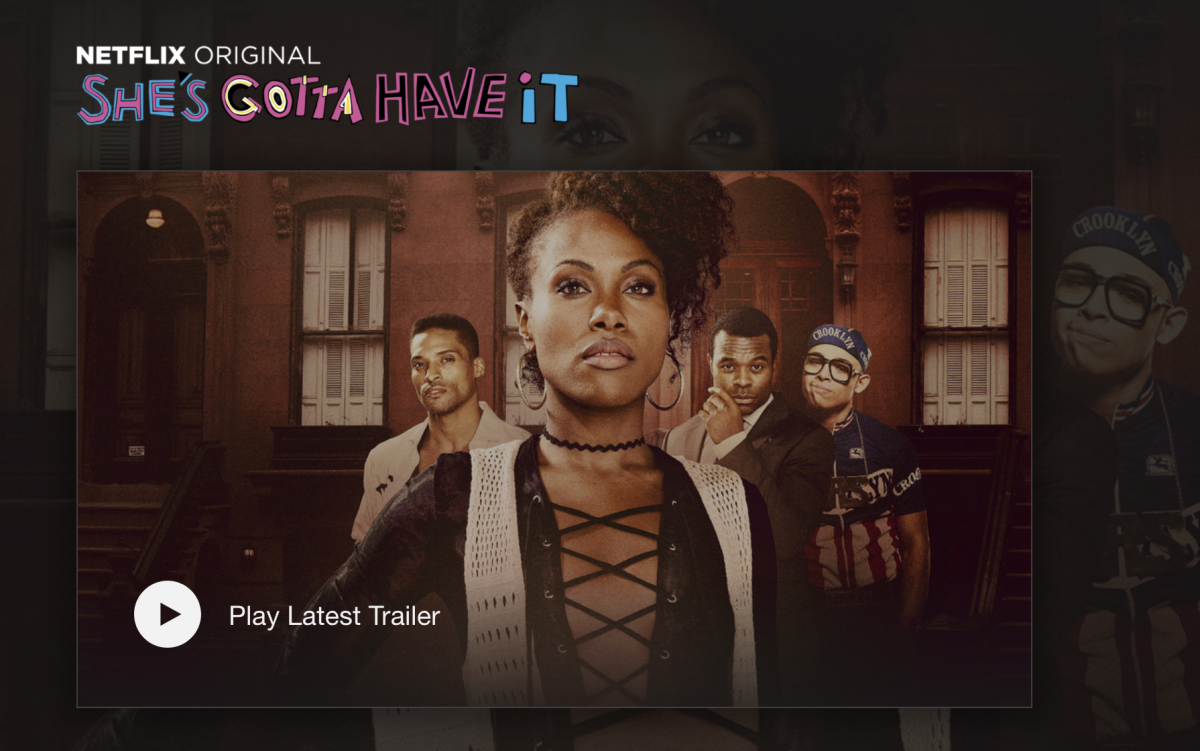Spike Lee’s film “She’s Gotta Have It” deviates from Hollywood’s depictions of heteronormative, white relationships, depicting a black woman totally in charge of her own sexuality. Or at least that’s the idea.
Lee doesn’t have the best track record for his portrayals of black female characters, especially one as complex as Nola Darling, the “sex-positive, polyamorous, pansexual” black artist at the center of the storyline. As much as Darling is presented as an independent, self-assured grown-ass woman, her character is stagnant as she strings along her various lovers in an outstandingly immature depiction of mature relationships.
While the original 1986 film was important because it ushered in a discussion of black culture and film, the new TV adaptation failed to do anything quite as powerful.
With society on the cusp of expansion of feminist theory and acceptance of different types of relationships, Darling’s character is crucial. Still, this rendition did a poor job of accurately representing queerness.
Throughout the series, the show centers on Nola’s inability to commit and communicate, which she blames on her sexuality. She even goes on a “man-cleanse” and falls into the arms – rather, the bed – of a woman, Opal. When she’s tired of men, she goes to Opal. When she needs to get bailed out of jail, she goes to Opal. Yet when Opal needs her to be present, she falls short. Darling is noncommittal with all her partners, has serious issues being honest with any of them, and jumps around with the dismissive attitude of a teen. It’s a far cry from this strong woman Lee wants to present, someone who seems at face-value like an iconic character for being an unapologetic rarity in TV and film: a powerful black woman who is in touch with her sexuality and takes ownership of it.
What are Darling’s actions telling the viewers, especially those who identify as queer? Is it telling us that queerness is inherently linked to negative traits and behaviors within relationships? Is queer expression only acceptable when heteronormativity fails, like in the case of Darling’s man-cleanse? It is important not to invalidate queerness with stereotypical presentations in the mass media.
Portrayals of queer people as flaky and inconsiderate in media transcend the TV or laptop screen and can hurt queer people in real life. A 2011 study by researchers at Southwestern University discovered a direct correlation between queer identity and representations in the media, finding that media role models who are gay, lesbian and bisexual can have a positive influence on people who are gay, lesbian and bisexual. Why not use the considerable platform Lee had to create a character who can be a role model, someone to dispel myths about non-heteronormative relationships?
On a show geared toward young people, queerness and the fluidity of sexuality must be presented properly and portrayed well. We should never make people feel like their emotions and sexuality aren’t being taken seriously, and portrayals such as the one in “She’s Gotta Have It” will encourage society to view non-monogamous and non-heterosexual relationships as invalid and noncommittal, and even possibly dissuade viewers from further exploring their sexuality. We must actively work to represent minority groups positively, and that starts with the TV shows and films so many of us come home to every night.
Kay-Ann Henry is a freshman majoring in journalism.






